Here is a look at the development of a semi-exposed root black pine over the past seven years. Very little wiring was done during this time, but the tree was decandled every year it was healthy enough to do so. The tree is sixteen years old.
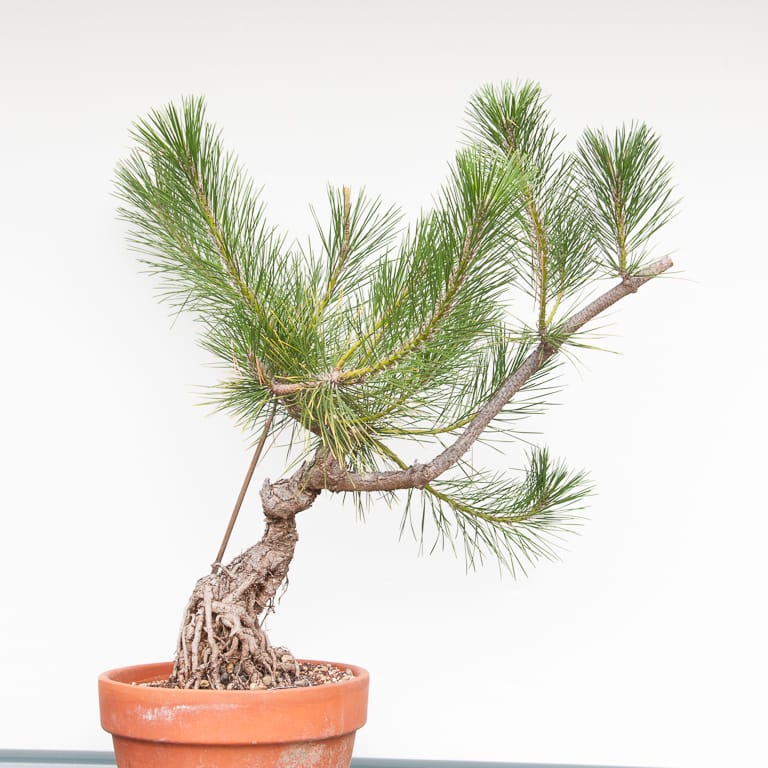
June, 2013
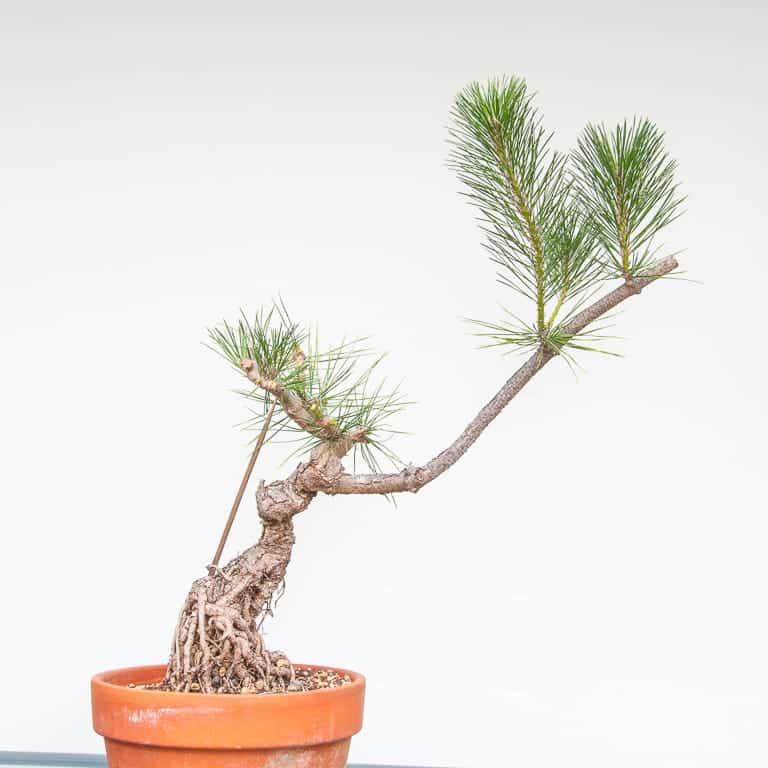
After cutback
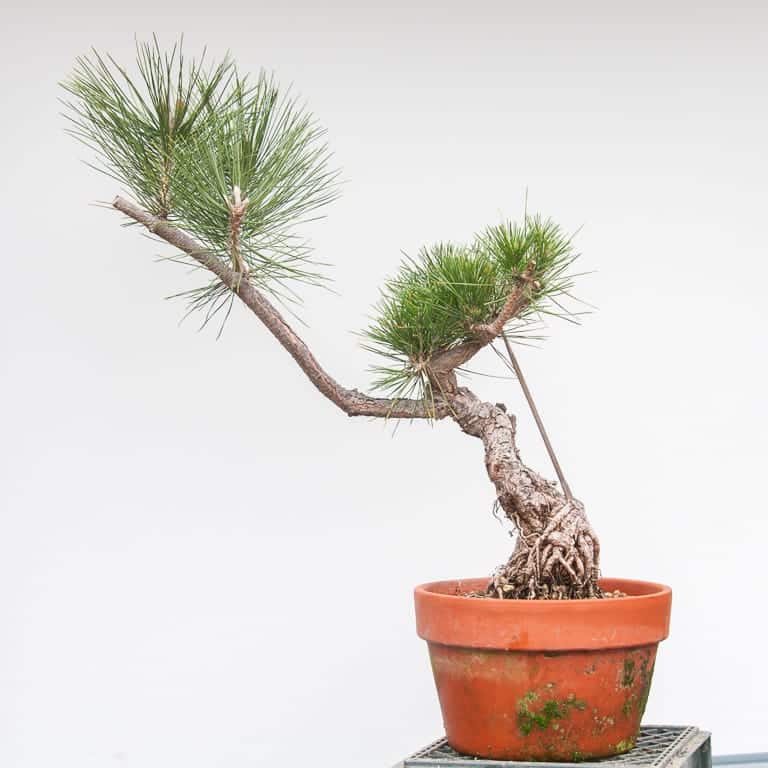
January, 2014
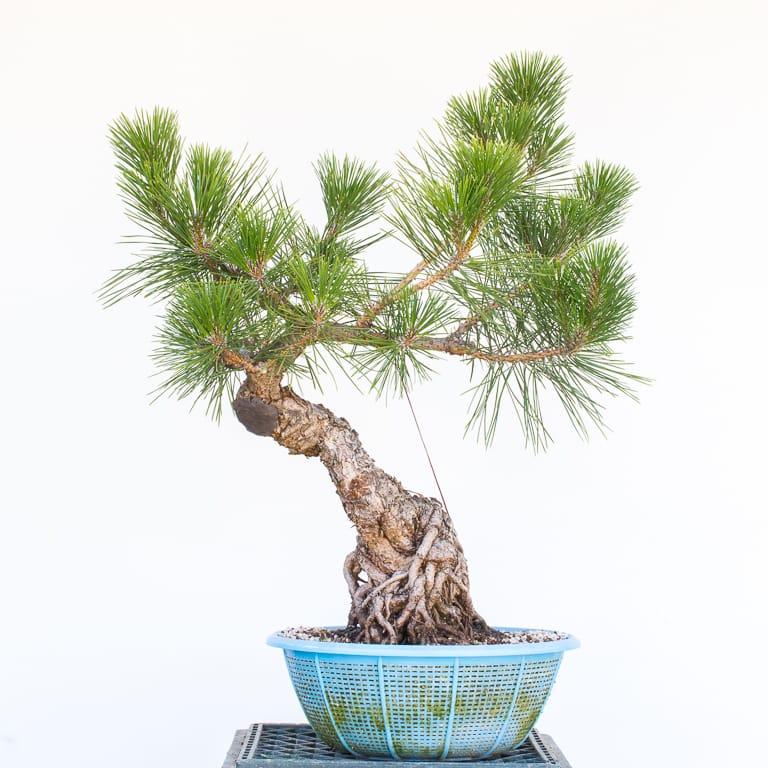
June, 2015
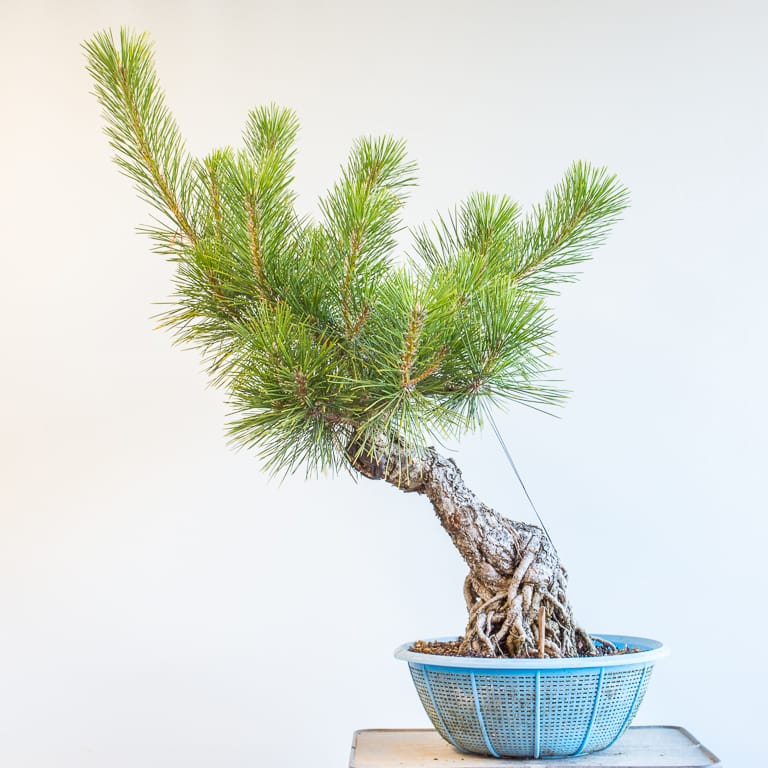
July, 2016
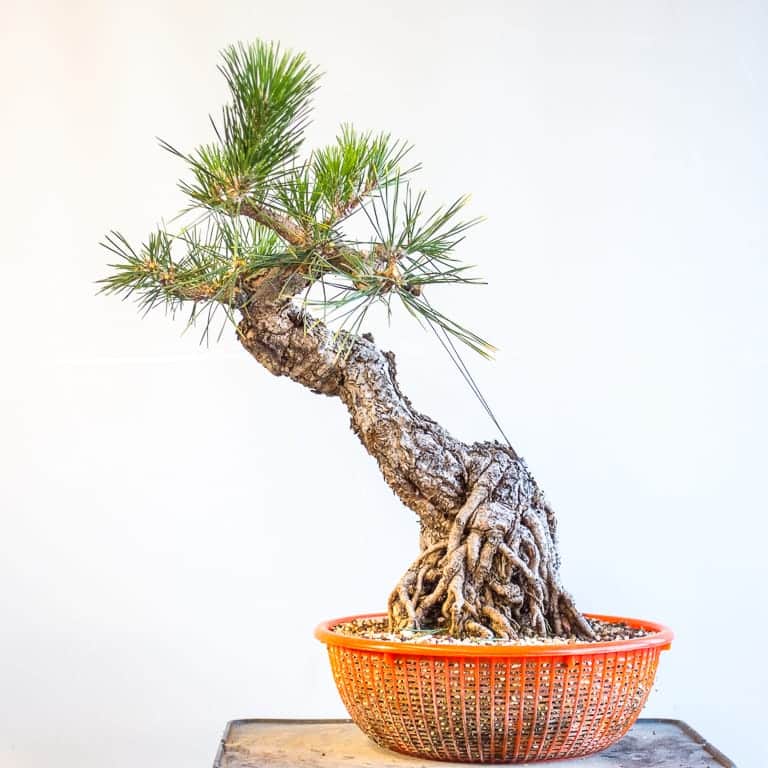
June, 2017

August 2019
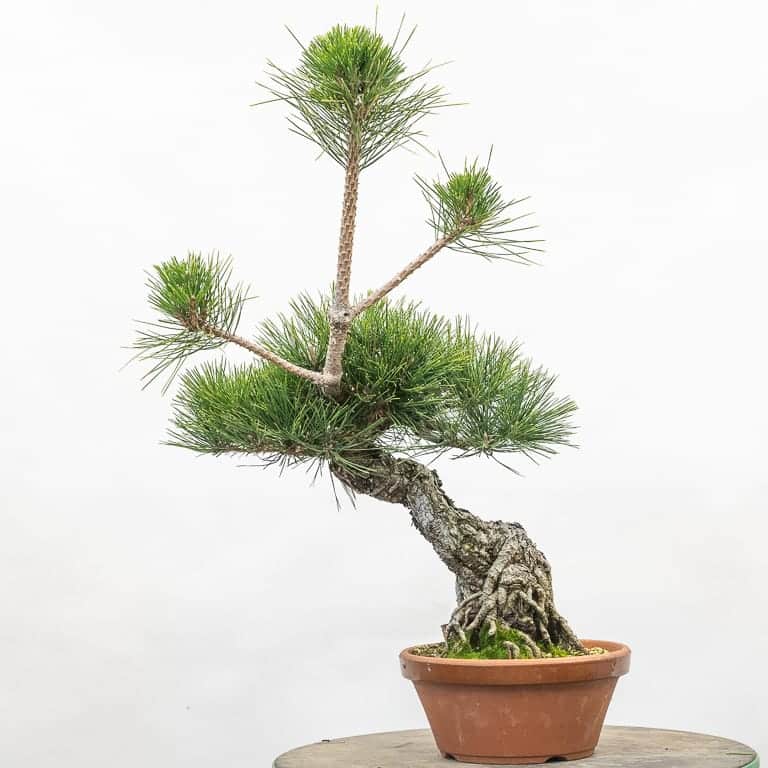
January, 2020
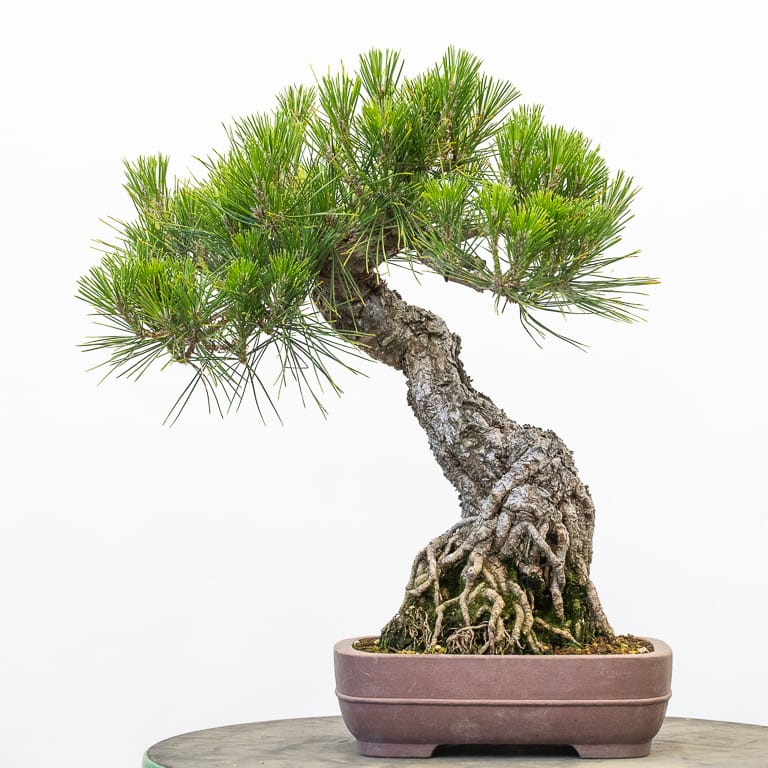
June, 2020
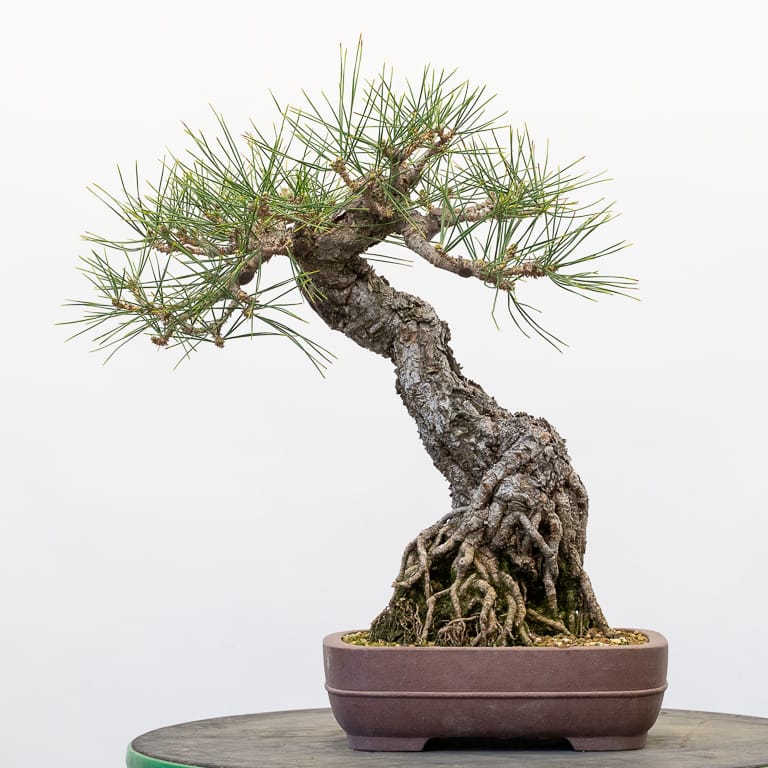
After decandling – 18″ tall
Subscribe to Bonsai Tonight
New Posts Delivered Every Tuesday and Friday
Jeff S says
Spectacular Jonas! So helpful to see the progression. Would you do anything differently if you were starting again? I see a long road ahead for my 2020 cuttings.
Jonas Dupuich says
Thanks Jeff – and ha! I’d do almost everything differently. Some ideas:
– cut crossing roots as soon as they appear
– avoid tight turns in the trunk that can lead to bulges
– WIRE THE BRANCHES MORE FREQUENTLY DURING DEVELOPMENT
– DON’T SKIP CUTBACK AND NEEDLE PULLING
– remove sacrifice branches earlier
Of course, each of these mistakes gave the tree character so I don’t know if it would be better worse had I done the above, but it would certainly be different!
John says
I would like to ask why would you choose to cutback when we want the tree to grow it’s desired trunk size?
Jonas Dupuich says
Hi John! There are several reasons to cutback during the trunk thickening phase. The main reason is to encourage growth in a different area of the tree. When one sacrifice branch gets too big I remove it and encourage another sacrifice branch to grow.
For this tree, I do not want the trunk to thicken any more so I’ve started decandling it.
Does this help?
Tlm Regelski says
Thanks for lessons useful to us mid-level enthusiasts. Keep them coming. Too much emphasis on high-class trees is depressing to those of us who can’t find such material and don’t have the tools. How about use of limb benders? Use (and availabilty) of jin chemicals? How to remove a candle properly? Growing and wintering in very cold climates (and best trees to use)?
Jonas Dupuich says
Thanks Tom! The idea behind posts like this is to show that young material – the starting point of the progression – can end up with interesting character in a relatively short amount of time. (I couldn’t find good material either so I started growing bonsai when I started bonsai). Your topic suggestions are great! Before I get to them, here’s some reading on the topics:
– https://bonsaitonight.com/2018/01/23/how-to-use-bonsai-jack/
– for jin and shari I’ve only used lime sulfur to date, am planning a post or two on the topic this summer
– https://bonsaitonight.com/2013/06/14/decandling-black-pine-making-the-cut/
– https://bonsaitonight.com/2013/06/17/techniques-for-controlling-vigor/
– https://bonsaitonight.com/2013/06/21/making-the-cut-redux/
– I’m over-due on a cold-winter bonsai care post, will look to do one after some more research!
Thanks for the tips!
Jeff S says
May I also say, the progression in the shape of the exposed roots is remarkable. Can you say anything about how that evolves? Do the roots exposed earlier continue to thicken & change? How are you directing that progression?
Jonas Dupuich says
Thanks! And yes, the roots continue to thicken and change as long as the tree has sacrifice branches that are growing vigorously. I did almost no work at all on the roots over these years – the changes are simply a result of letting the tree grow and thicken on its own. Had I don’t some more work along the way (cutting crossing roots, removing roots that grow at awkward angles, etc.) the roots might look better.
Richard Dorfman says
Awesome progression, Jonas. Picked up lots of information just by scrolling year to year.
One question: why do you refer to it as semi-exposed root?
Jonas Dupuich says
Thanks Richard – and good question. I didn’t know what to call a tree with exposed roots at the bottom part of the trunk and a standard trunk above that. It’s likely that “semi-” isn’t necessary, but I wanted to acknowledge that the trunk has both characteristics.
Darth Masiah says
Excellent post! Thanks.
Jonas Dupuich says
Thanks, Darth!
John Demaegd says
Good to see the progression as it changes into a nice Bonsai. The first picture shows it after the roots are exposed, so how many years did that progression take?
Jonas Dupuich says
Thanks, John! The tree was nine years-old in the first photo. I may have some photos from when it was younger but the young trees don’t have as much character and it was hard to tell which was which.
Keith R Jarvis says
Assumption – all adventitious buds/back-budding, no grafts? Confirm/Correct? Why am I talking this way?
Jonas Dupuich says
Ha! That’s right, no grafts. I rarely graft pines I grow from seed, but I regularly graft field-grown pines. The buds are mostly apical or adventitious, and there may be a few branches that grew from needle buds.
Lani says
Very satisfying to be able to compare one year’s growth to the next, and from beginning to the present. The last picture is my favorite because the roots are spectacularly formed – that’s the first thing my eye focuses on . I think that this tree has a wonderful start to becoming a great piece, as is your little Japanese maple is.
Jonas Dupuich says
Thanks Lani – I appreciate it! Will look to do more posts like this in the future.
Terence Krista says
Great article and pictures. I live in the Bay Area and have several black pines that look like that second to last photo (June, 2020). I thought I was too late to de-candle this year but see you showed no such inhibitions. I know we have a long growing season but are you sure new buds will push out before winter? Should I take the plunge? And do you fertilize after de-candling?
Thanks!
Jonas Dupuich says
Hi Terence – wow, I wish I had several trees at that stage of development! I start decandling in mid-May and continue through mid-July so there’s still time to decandle. Even if you decandle on the late side you can get good buds, but the needles may be short. I’d start hesitating to cut in mid-July, depending on your weather.
I typically stop fertilizing when I decandle and then I start up again about a month or two later.
Reg says
Hi Jonas
Thank you. Your post are always detailed and information. I always look forward to reading them.
Could you explain what you mean by cross cutting the roots on your exposed root pine?
Jonas Dupuich says
Hi Reg! Good question – it’s clear that most of the exposed roots cross other roots, but some of the roots cross at awkward angles. For example, the root that emerges the highest on the trunk (it starts on the right side and crosses over to the left) looks like it’s folding its arms or crossing its legs, whereas other roots grow primarily outward. I prefer the look of the outward growth to the inward growth. If I had the chance, I’d go back and remove a few of the roots that start on one side of the trunk and cross over to the other side.
Does this help?
Mike Butler says
Just a question kinda off topic- say I wanted to plant the tree about 2 inches deeper to cover the roots (I would NEVER do that to this tree) would that be risky?
Jonas Dupuich says
Hi Mike – planting the roots too deep will have no effect on some species and can kill other species. Ideally the roots are just under the surface for trees in early stages of development.
Mike Butler says
Jonas, first, as I went and re-read the post, your mistakes definitely added character. If you had manicured it exactly right then I think may have been like all the other “over” manicured trees out there. Makes yours different and I appreciate that. To clarify my earlier question, lf I raised the soil level on a healthy pine an inch or so is that dangerous? I know it wouldn’t be on a ficus, but a pine?
Jonas Dupuich says
Thanks, Mike! As far as I know, raising the soil 1″ over the roots isn’t dangerous on pines, but it will prevent bark from developing character where it’s buried.
The more significant problem is that heavy roots can form above the nebari. Pruning to remove these roots slows development of the trunk and surface roots and makes it harder to create a flared root base.
Feel free to follow up with photos on the forum if you have additional questions about the best approach for a specific tree: https://ask.bonsaitonight.com